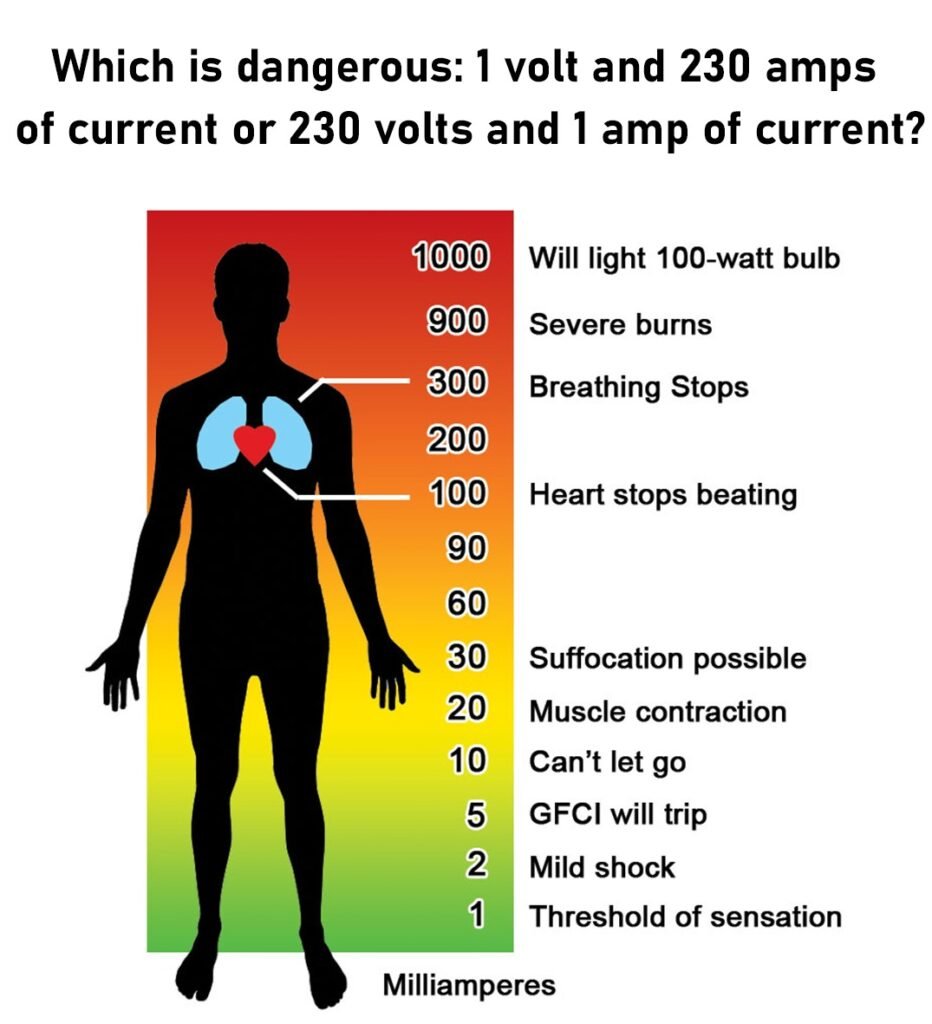Which is dangerous: 1 volt and 230 amps of current or 230 volts and 1 amp of current?
Which is dangerous: 1 volt and 230 amps of current or 230 volts and 1 amp of current?

Both voltage and current are important factors in determining the danger of an electric shock.
Voltage is the potential difference between two points, which determines how much energy is available to push the current through a circuit.
Current is the rate of flow of electric charge, which determines how much energy is delivered to the body per unit time. The amount of current that flows through the body depends on both the voltage and the resistance of the body, which can vary depending on the skin condition, the contact area, and the path of the current.
According to some sources¹², most shock deaths result from contacts with electrical systems ranging from 70 to 500 volts. The current that can cause fatal damage to the heart is about 100 to 200 milliamps, which is equivalent to 0.1 to 0.2 amps¹.
However, even lower currents can cause severe pain, muscle contractions, and respiratory paralysis².
Therefore, both scenarios that you mentioned are potentially dangerous, depending on how the current flows through the body. If you touch a 1 volt source with a very low resistance (such as a metal wire), you could experience a current of 230 amps, which would be extremely lethal.
On the other hand, if you touch a 230 volt source with a high resistance (such as dry skin), you could experience a current of 1 amp, which would also be very harmful.
The best way to avoid electric shocks is to always be careful around electrical sources and devices, and to use proper insulation and protection measures.




